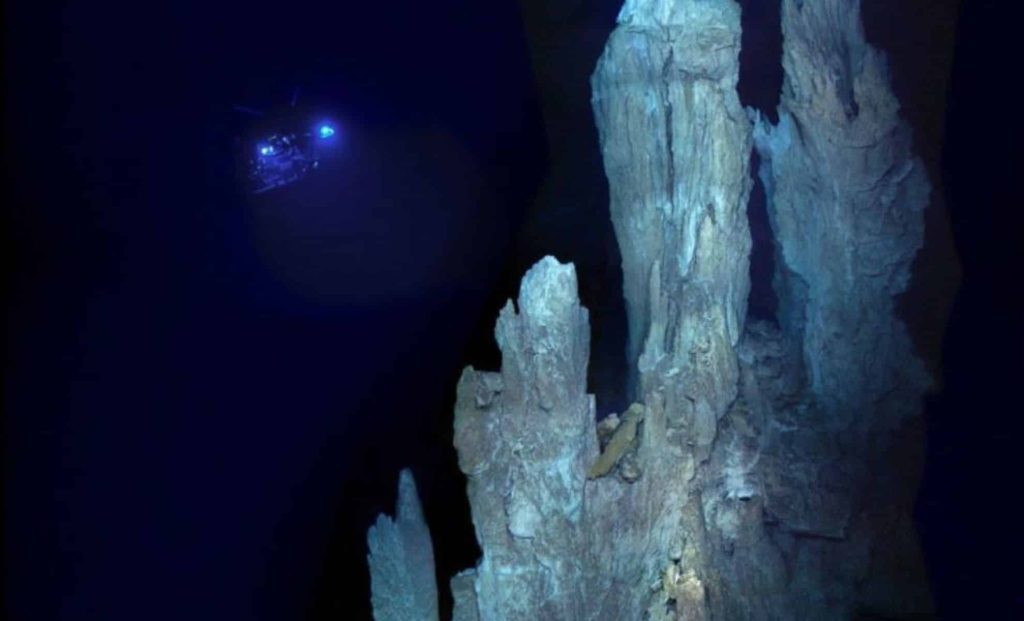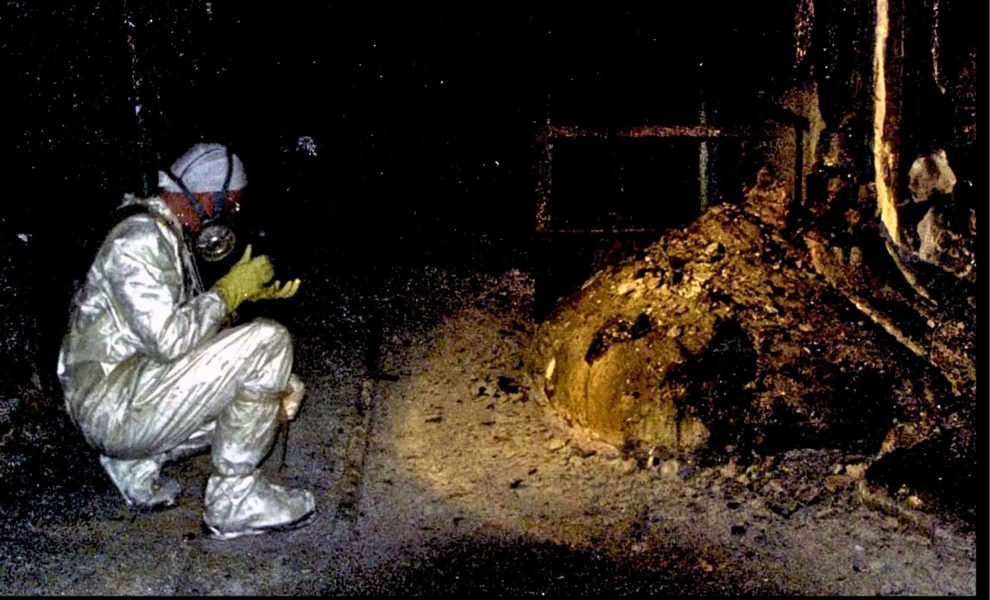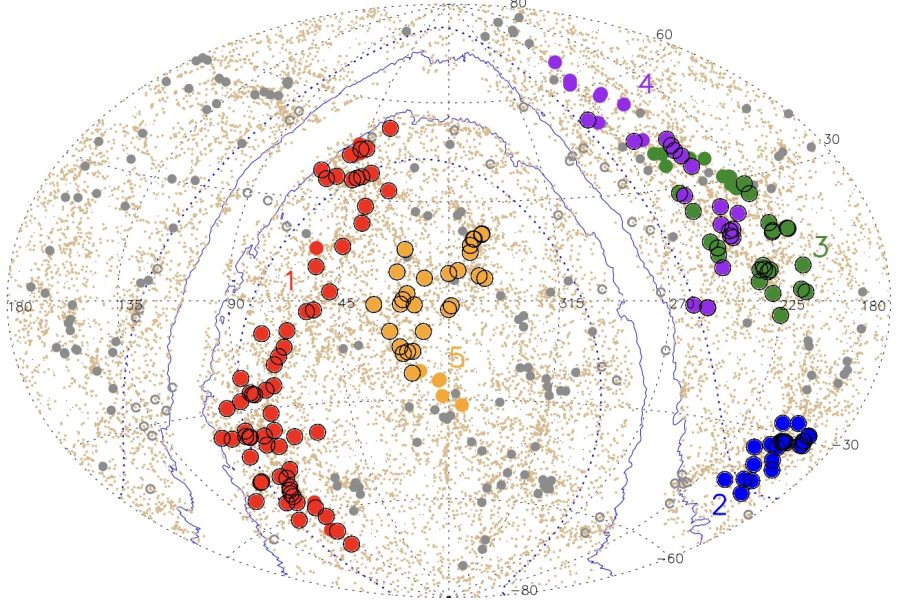Scientists Uncover a ‘Lost City’ Deep Beneath the Ocean – And It’s Unlike Anything on Earth – The Daily Galaxy –Great Discoveries Channel

Beneath the vast Atlantic, hidden in total darkness, an ancient city rises from the seafloor. But this is no human ruin—it’s an alien-like world of towering carbonate spires, strange lifeforms, and eerie venting chimneys that have been active for at least 120,000 years. Known as the Lost City Hydrothermal Field, this underwater landscape is unlike anything else ever discovered on Earth. But its greatest mystery? Scientists believe it may hold clues to how life first began—and even hint at where we might find it elsewhere in the universe. Could this strange deep-sea wonder be the key to unlocking life beyond our planet? Keep reading to dive into the astonishing details.In the crushing darkness 700 meters (2,300 feet) beneath the Atlantic Ocean, an astonishing world lies hidden—a labyrinth of towering structures, glowing ghostly blue in the light of remotely operated vehicles. This is the Lost City Hydrothermal Field, a place so unique that nothing else like it has ever been found on Earth. First discovered in 2000, this vast network of towering carbonate formations rises from the seafloor like an ancient fortress lost to time.The monolithic spires, formed by mineral-rich fluids seeping from the Earth’s crust, range in size from small mushroom-like stacks to Poseidon, the tallest of them all, standing nearly 60 meters (200 feet) high. Unlike the more commonly known black smoker vents, which rely on magma to heat surrounding water, the Lost City’s ecosystem thrives in a completely different way. Here, chemical reactions deep within the Earth’s mantle drive the formation of hydrogen and methane, the essential ingredients for life, making this hydrothermal field a scientific marvel.But the Lost City is more than just an awe-inspiring geological wonder—it’s also teeming with life. Within the cracks and crevices of its towering chimneys, strands of bacteria cling to the mineral surfaces, feeding on hydrocarbons that emerge from the vents. This ecosystem, fueled not by sunlight but by chemical reactions, is one of the most extreme and alien environments known on Earth. And according to some scientists, it may not be limited to our planet.The Lost City is remarkable not just for what it reveals about life in Earth’s depths, but for what it might tell us about life elsewhere in the universe. Scientists believe that environments like this could exist on distant ocean worlds, including the icy moons Europa (Jupiter) and Enceladus (Saturn), both of which harbor vast subsurface oceans beneath their frozen exteriors.Microbiologist William Brazelton, discussing the significance of the Lost City, told The Smithsonian, “This is an example of a type of ecosystem that could be active on Enceladus or Europa right this second.” These moons have conditions strikingly similar to those found in the Lost City—cracks in their icy crusts where chemical-rich water may be venting into the oceans below, creating the perfect environment for life to take hold.“And maybe Mars in the past.” This statement suggests an even greater possibility—that long ago, when Mars had more liquid water, similar hydrothermal systems could have supported microbial life beneath its surface. The implications are staggering: if the Lost City can sustain life in complete darkness, powered only by deep-sea chemical reactions, then perhaps similar life-forms exist in the hidden oceans of other worlds.What makes the Lost City even more extraordinary is the delicate, otherworldly structures forming around its vents. Researchers from the University of Washington have described how these vents appear to be “weeping” with fluid, creating “clusters of delicate, multi-pronged carbonate growths that extend outward like the fingers of upturned hands.” This eerie formation adds to the alien-like nature of this deep-sea realm, making it one of the most visually stunning environments ever encountered by marine scientists.Unlike the black smoker vents found elsewhere in the ocean, which are fueled by magma and tend to be short-lived, the Lost City is far older and more stable. Its chimneys have been active for at least 120,000 years, and possibly much longer, providing an unparalleled look into Earth’s geological past. These vents continuously pump out hydrogen and methane, key building blocks of life, at rates far greater than those found in volcanic hydrothermal systems. This unique process may explain why the Lost City has remained active for so long—and why its discovery is so important for understanding Earth’s deep history.Despite its scientific importance, the Lost City faces an unexpected and urgent threat—deep-sea mining. In 2018, the Polish government was granted mining rights in the area surrounding the Lost City, raising concerns among scientists. Although the hydrothermal field itself does not contain valuable resources like gold or rare metals, large-scale mining operations nearby could create plumes of sediment that drift into the Lost City, smothering its fragile ecosystem.With deep-sea mining projects expanding worldwide, researchers are calling for urgent protection measures to preserve this rare and ancient environment. Many experts believe the Lost City should be designated as a World Heritage Site to ensure its survival. If action isn’t taken soon, this scientific treasure—one that could hold the key to understanding both Earth’s past and the possibility of life beyond it—may be lost forever.For now, the Lost City Hydrothermal Field remains a living testament to the power of Earth’s geology and the resilience of life in the most extreme environments. It has stood for over 120,000 years, quietly shaping our understanding of deep-sea ecosystems, the origins of life, and the search for extraterrestrial organisms.As exploration technology advances, scientists are eager to unlock even more of its secrets—before human interference threatens its existence. Whether the Lost City will continue to inspire and reveal the mysteries of our planet and beyond depends on the decisions we make today.Hidden beneath the waves, untouched by time, the Lost City may hold the answers to some of the greatest questions in science. But will we protect it long enough to find out?Got a reaction? Share your thoughts in the commentsEnjoyed this article? Subscribe to our free newsletter for engaging stories, exclusive content, and the latest news.Comment Save my name, email, and website in this browser for the next time I comment.
© 2024 | Daily Galaxy | All rights reserved
Source: https://dailygalaxy.com/2025/02/lost-city-ocean-unlike-anything-on-earth/






